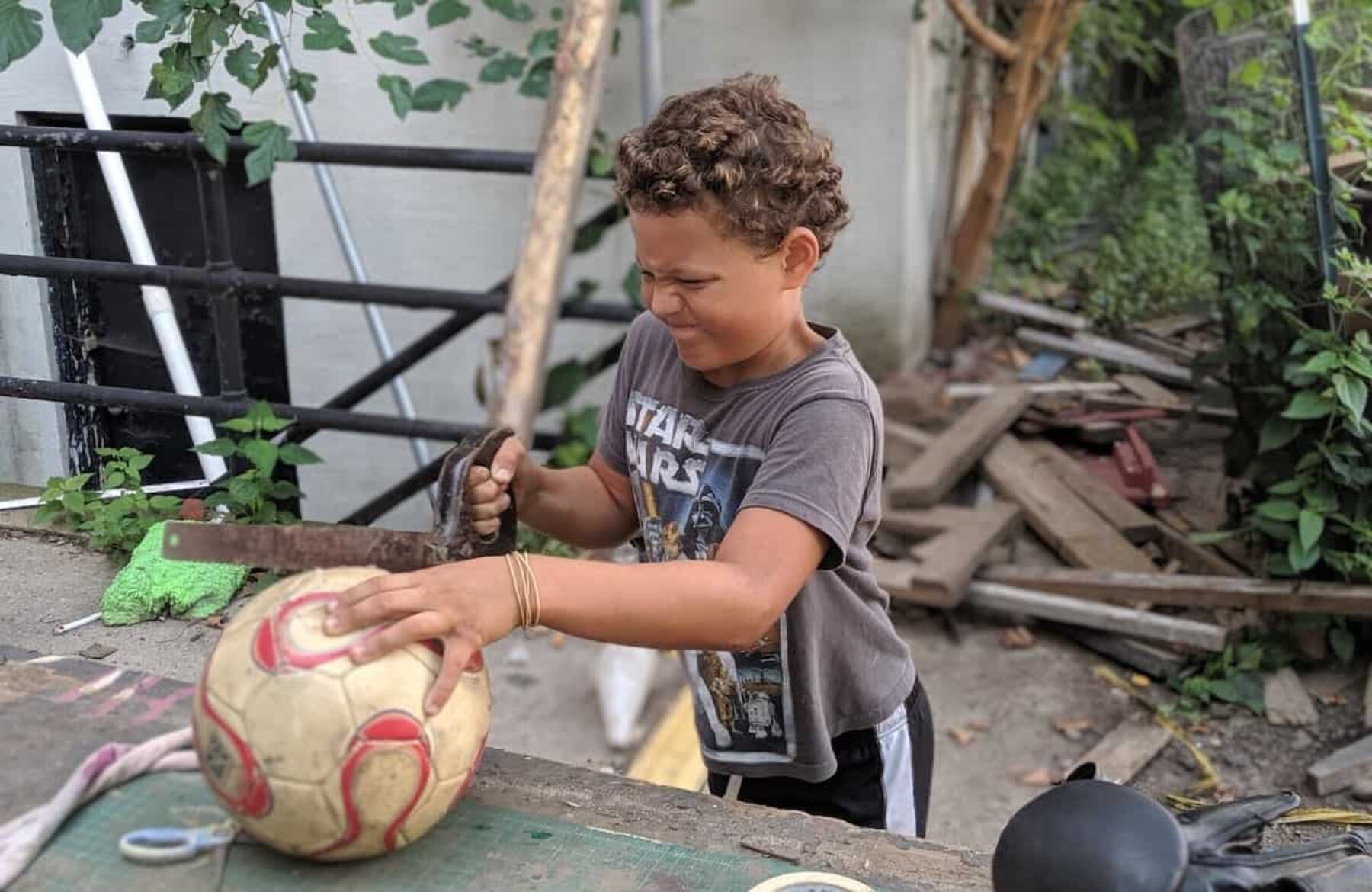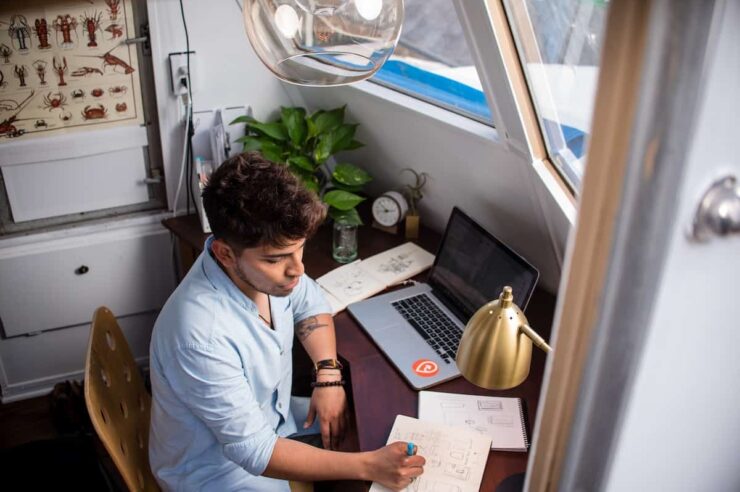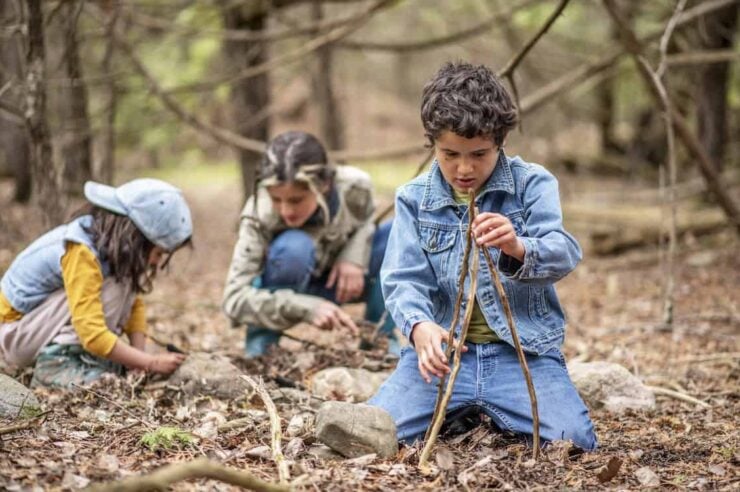Tools, old cars and even prickly bushes are being introduced to adventure playgrounds, amid research highlighting the benefits of risky play
Can you imagine your kid’s frustration, when you tell them they can’t go to an adventure playground? The foot stomp. The immortal: “But all my friends are going!”
But The Yard, in New York City, uses real hammers and nails, you think. It’s made entirely from junk. Bits of old wood. Spare bicycle tyres. Metal ladders. Pallets. Parents aren’t even allowed in. And you have to sign a liability waiver for your children. Then there are saws. Proper hand saws. Who gives those to kids?!
Yoni Kallai for starters. As the head playworker at The Yard, he cheerfully hands out saws and numerous other tools to children every week. Then they can get busy building, exploring, destroying, whatever they want. It’s their play space.
“I hear kids themselves say stuff like: ‘Oh, you can’t trust kids with saws,’ while they’re running with a saw,” says Kallai. “But everything’s fine, nobody’s getting hurt: they’re just repeating the messaging that they’ve internalised.”
The Governors Island playground is just one of a growing number of children’s spaces where risk is being reintroduced. The thinking? That if we encounter risk when we’re young, we learn how to navigate tricky situations when we’re older.
A 2015 report by experts in Canada backs up the idea. Researchers found that risky outdoor play has a number of positive health effects for children aged 3-12 years, including increased social interactions, creativity and resilience.
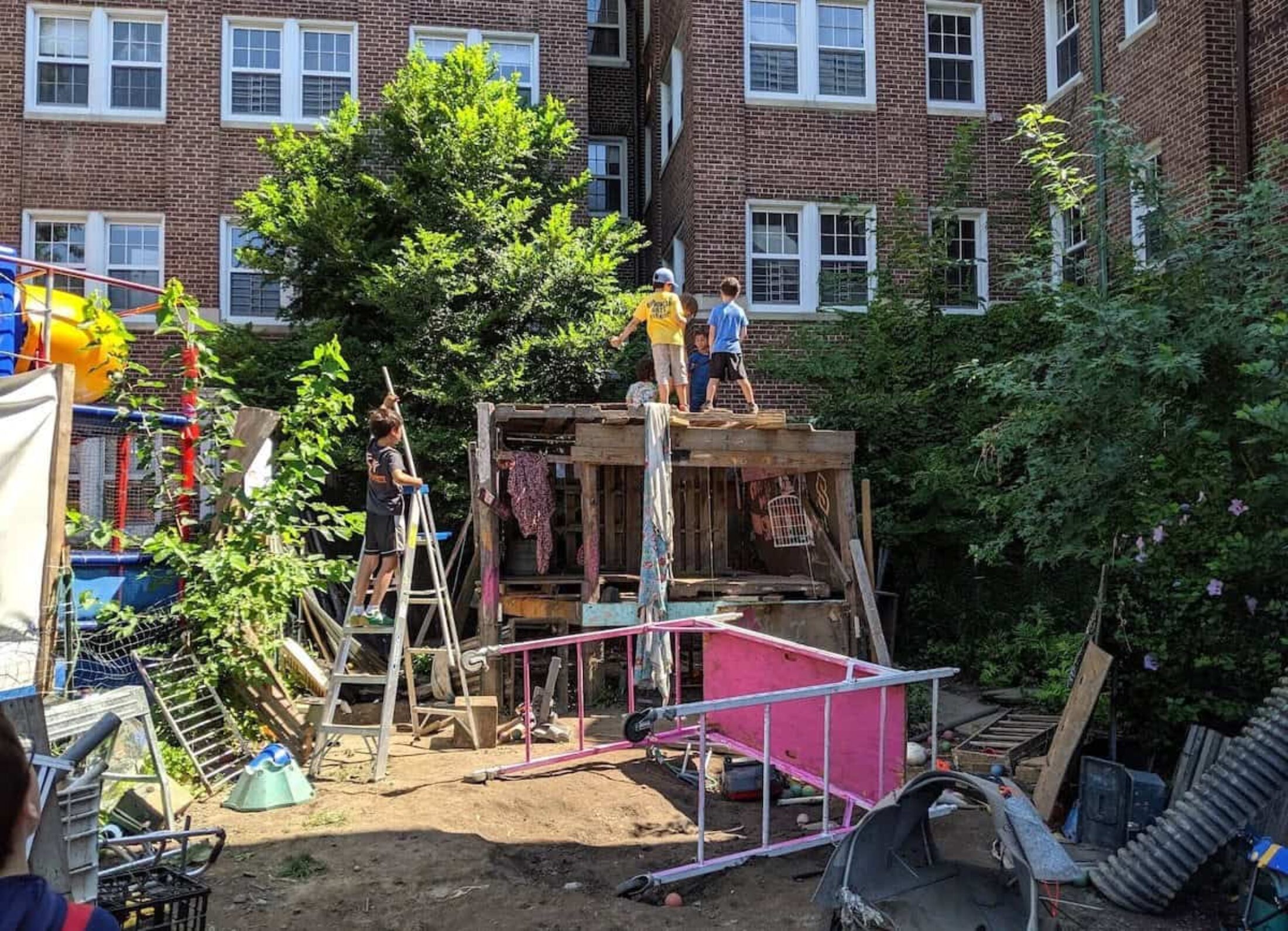
Kids at The Yard are left to experiment with all sorts of junk, including tyres and scrap wood. Image: Ginny Jennings
“At normal playgrounds, the kids are sometimes more reckless, because they have these rubberised mats,” points out Kallai. “It gives a false perception that you can do whatever and you’ll be fine. The kids on our playground can see more of the risks and from there they act in a more mature, responsible manner.”
“There’s plenty of research to say this kind of outdoor, unstructured, loosely supervised play is beneficial [to children],” says Gemma Goldenberg, a research and learning specialist at the Chartered College of Teaching, based in UCL, London.
In fact, a 2011 study suggested that if we place too many restrictions on risky play, children can be more prone to obesity and mental health issues. It also suggests it could inhibit learning, perception and judgment. As a design approach, it’s arguably more prescient than ever, when children are spending more and more time indoors.
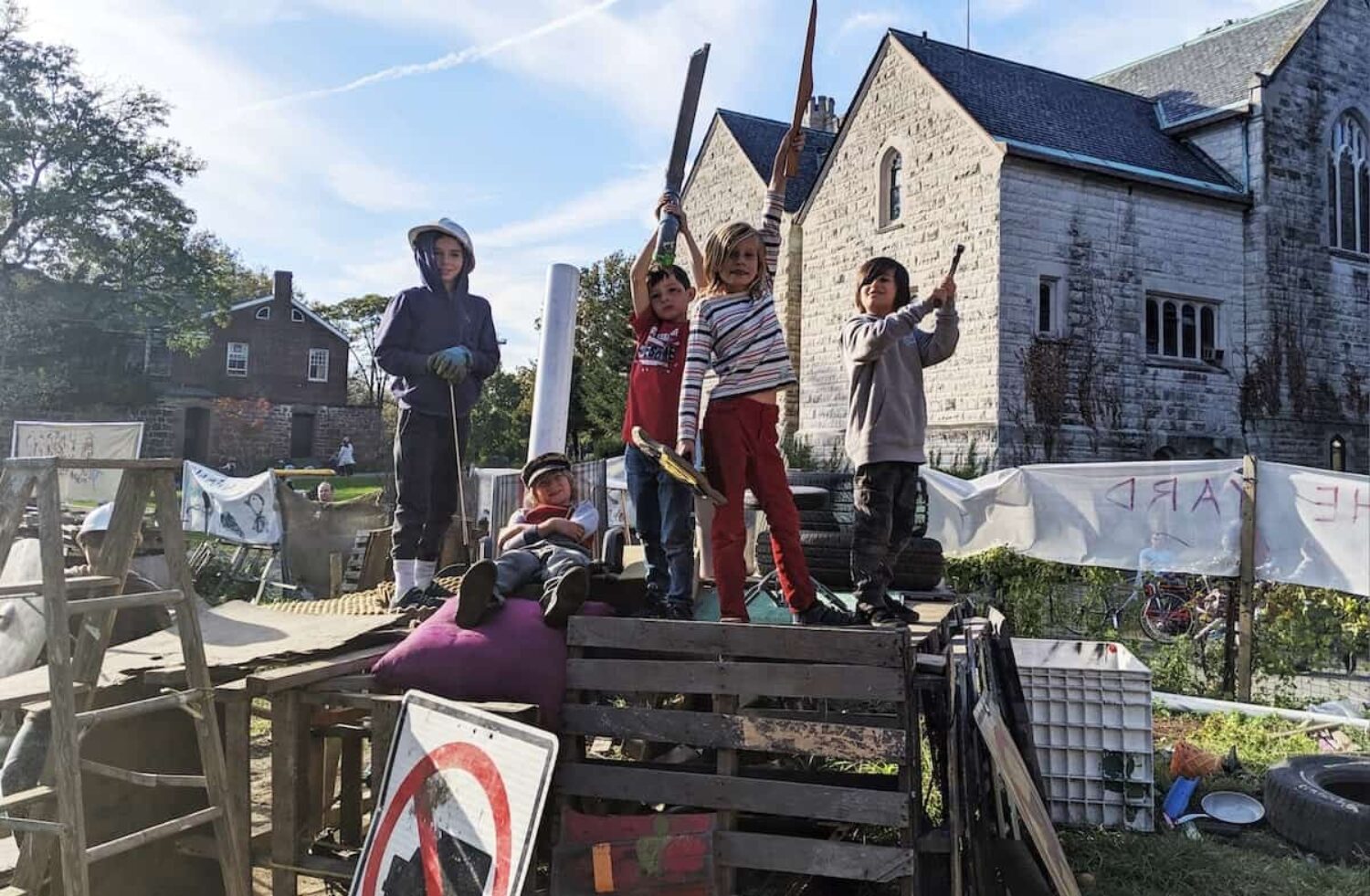
Children conquer fear and calculate risk at The Yard. Image: Ginny Jennings
And even insurance companies agree: in 2020, the DGUV – the umbrella association of statutory accident insurers in Germany – called for more adventure playgrounds that teach children to develop “risk competence”.
“It’s important that children learn how to manage risks and find what they’re comfortable with,” says Goldenberg “Development happens in that zone of ‘proximal development’, where you’re slightly stretched outside of what you would do without somebody there to help you.”
Risks v hazards
Risky play, however, isn’t just about letting kids go off and do whatever they want. The Queen Maud University College of Early Childhood Education in Norway defines it as when a child is able to recognise and evaluate a challenge, before deciding how to act. This could mean playing at height, or at a high speed or using harmful tools. It also includes rough- and-tumble play, and getting lost.
At The Yard in New York, Kallai and his team differentiate between a risk and a hazard, giving an example of a ladder. “When we have a ladder out, some kids will not even touch the ladder. Some will go up one step, some will go all the way. That’s them choosing the risk level that they feel like taking,” he explains. “Whereas if the ladder looks intact, but in fact will collapse once the child plays on it, that is a hazard, that they’re not anticipating. We try to remove the hazards, but leave the risks.”
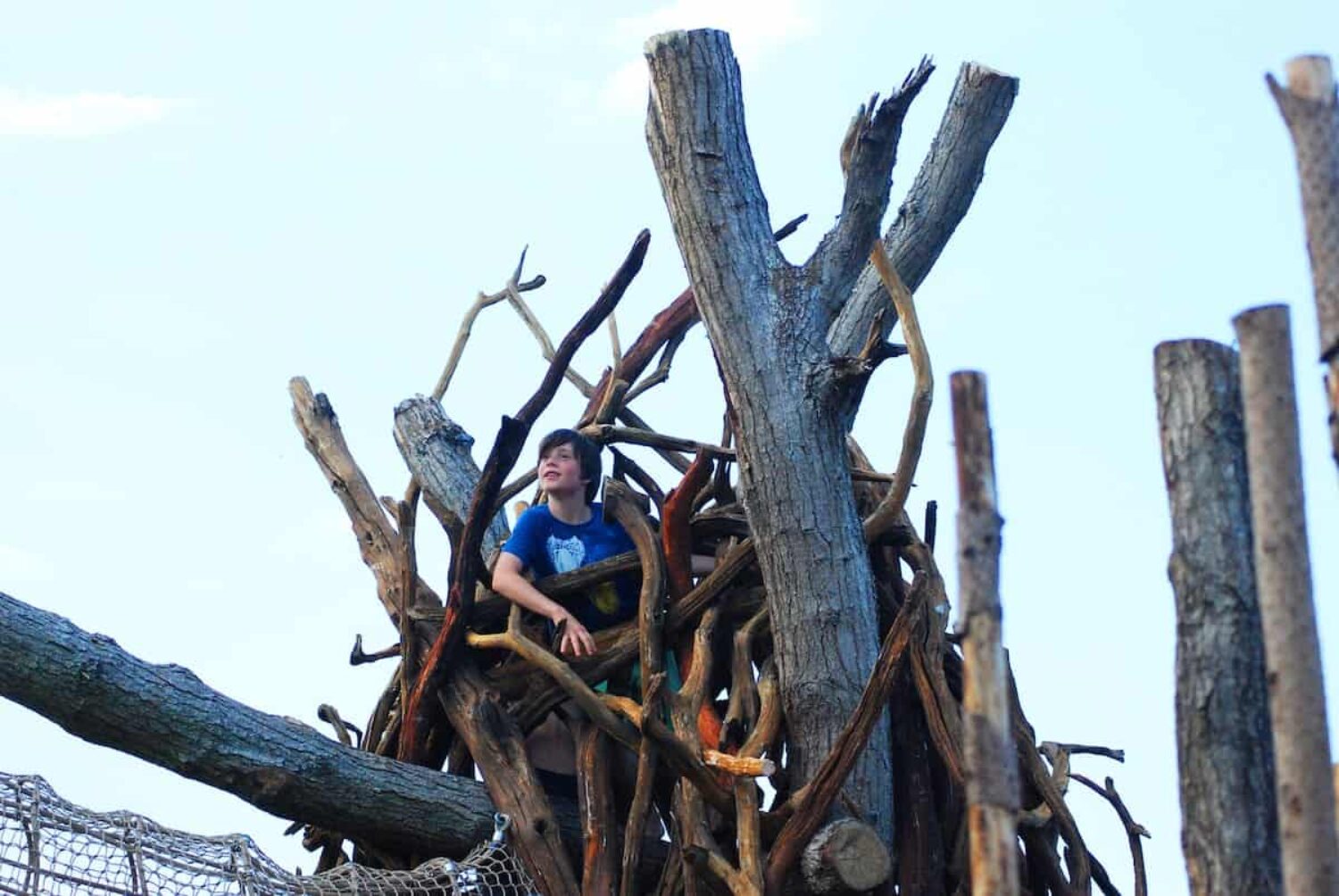
Risk has also been designed in to Tumbling Bay playground at the Olympic Park in London. Image: LUC
This approach allows the kids to explore independently and make decisions with their peers. Playworkers try not to interrupt or break the flow of play. They don’t offer unsolicited advice. Goldenberg believes this type of autonomy is particularly useful for older children.
“When they’re toddlers and pre-schoolers, they have quite a lot of opportunities for role play and open-ended play,” she notes. “But once they get to school age and beyond, all their outdoor time tends to be organised sports or structured after-school activities.”
Planned adventure playgrounds aren’t new. Indeed, Copenhagen’s Emdrup Junk Playground was the first to open in 1942. Conceived by the Danish landscape architect Carl Theodor Sørensen, it did away with the traditional four S’s – swing, slide, sandpit and seesaw – and instead used ‘waste material’ such as old cars, boxes and wood to encourage child-led play.
People have started to understand the importance of risk in children’s development
At their peak, there were estimated to be nearly 1,000 adventure playgrounds in Europe, including 400 in Germany, such as Berlin’s Kolle 37, which permits open fires and has animals onsite. In the UK, Somerford Grove in the London borough of Haringey, and Indigos Go Wild – in Torbay, Devon – are both still in operation.
The major step-change in playground design today is adding the exciting elements of adventure playgrounds to more safety-first playgrounds. The designer Jennette Emery-Wallis is among those leading the charge in the UK.
“When I started out, [playground design] was completely risk-averse and everything was about insurance and liability,” says Emery-Wallis, director of landscape architecture at UK environmental consultancy LUC. “But people have started to understand the importance of risk in children’s development. Play has a good future.”
Emery-Wallis designed the Tumbling Bay playground at the Olympic Park in London, and it’s easy to spot where risky play has been added. As well as natural rock boulders and slippery waterways, there are bridges to cross and ropes to climb. Children explore misshapen timber paths and clamber up the trees. Few UK playgrounds are similar.
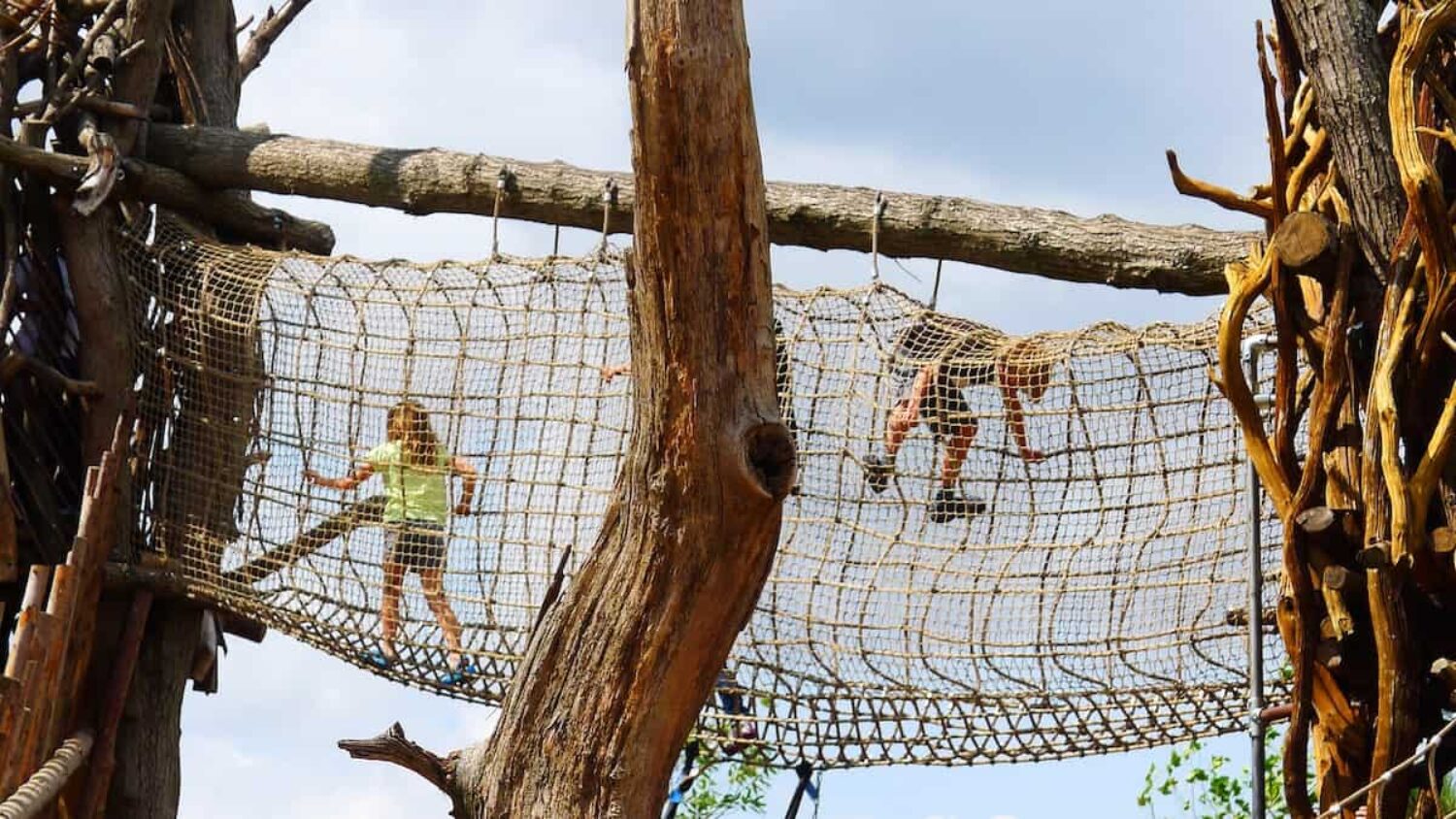
‘Play has a good future,’ says Jennette Emery-Wallis, who designed Tumbling Bay. Image: LUC
“Obviously we all want to protect our children – every parent wants to do that – but putting them in bubble wrap is not helping them,” says Emery- Wallis. “Kids should get dirty. They should fall over and hurt themselves.”
Many do at Tumbling Bay, but aside from one broken ankle, injuries are rarely serious. Kids will encounter prickly and poisonous plants here too, such as gorse and foxglove, just as they would in the countryside. These have been added on purpose.
“Kids have got to learn,” says Emery-Wallis. “I’m clearly not going to put something that’s going to kill them on the spot.”
Kids should get dirty. They should fall over and hurt themselves
Adults might have some learning to do as well. Back at The Yard, parents are sometimes allowed in during pop-up events – but the results of this happening have been mixed.
“The kids tend to stay within the family setting and interact less with each other,” says Kallai. “Often it is a father who ends up building a really big fort. The kid is just ripping pieces of tape, rather than the father supporting the child in their play.”
And where’s the fun in that?
Main image: A child saws a football in half at The Yard. Image: Ginny Jennings
